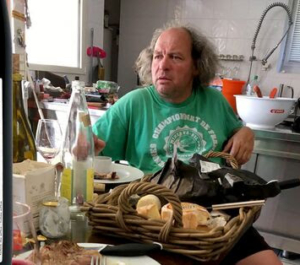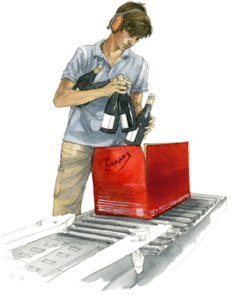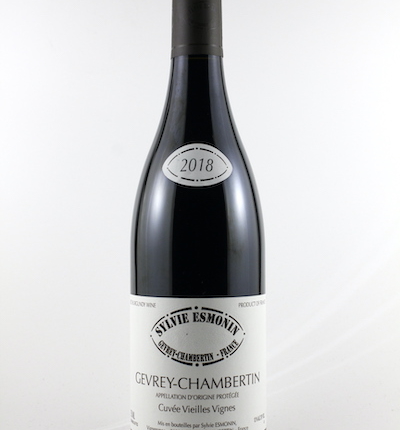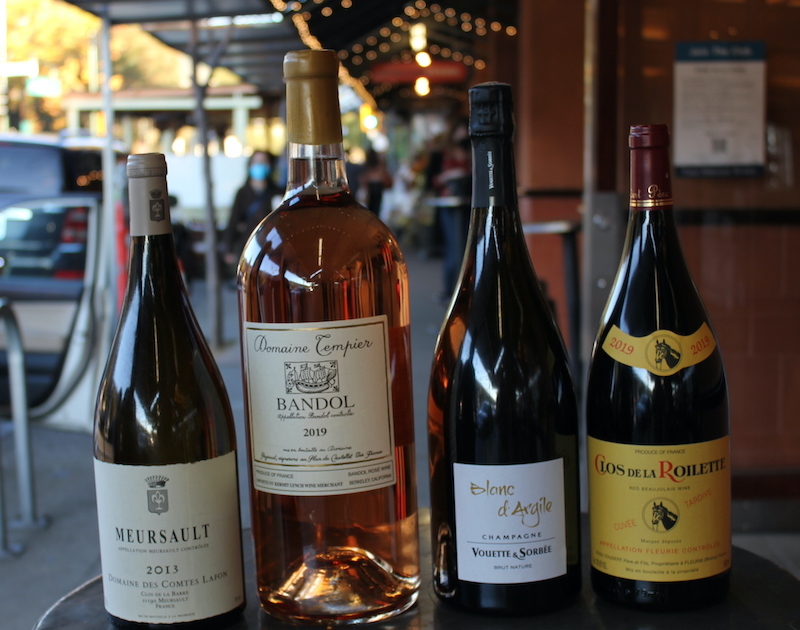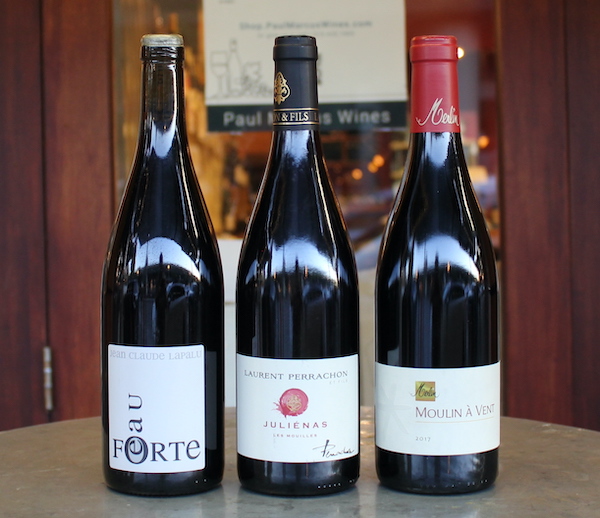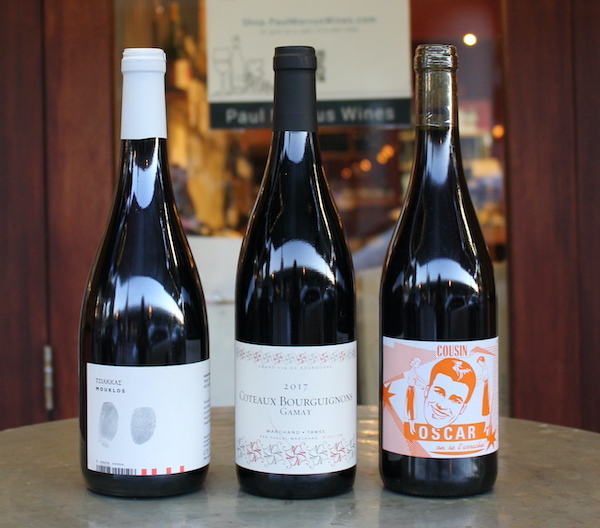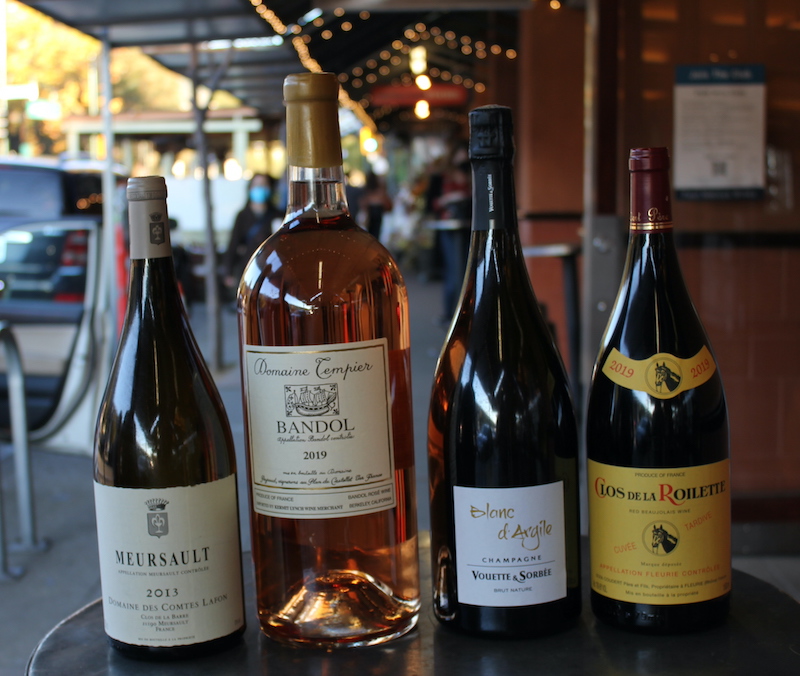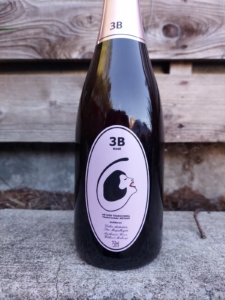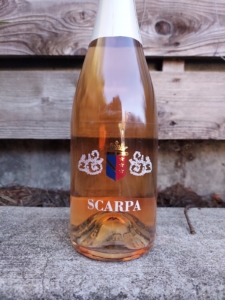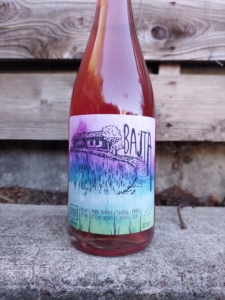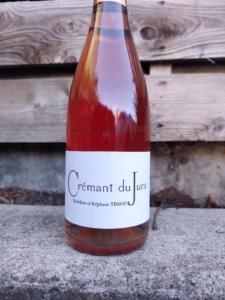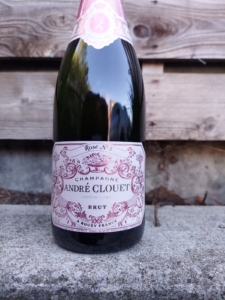Buying a bottle for a persnickety wine professional (or even a wide-eyed neophyte) can be a fraught mission. The options are almost limitless in terms of style, region, and price. Fear not: The staff of Paul Marcus Wines is here to help.
If you visit the shop, of course, we’ll be happy to walk you through the choices based on your budget and the personal tastes of the recipient. To get you started, however, we thought it might be useful to share what’s on our own personal wishlists. Spoiler alert: Despite our varied and distinctive palates, it seems we all lean toward the “classics” when eying that elusive bottle. Barolo? Champagne? Yes, please.
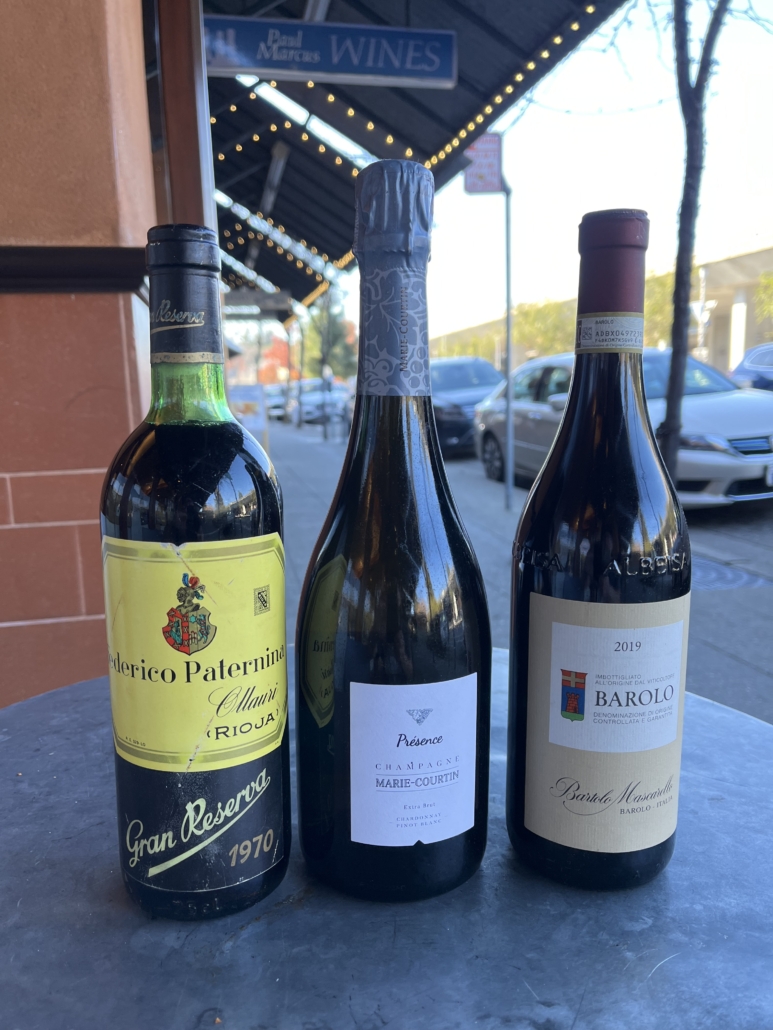
Brutal Discernment
Gifting a jaded wine pro a bottle makes sense on the surface–they like wine; ergo, it’s an appropriate gift. But below that surface is their possibly brutal discernment. How best to navigate this shoal?
Champagne is your best bet–it’s both delicious and useful. Recently, I had the Jacquesson 744, a Champagne given some extra time to rest on its lees and in the bottle, and it showed brilliantly against three top-notch rivals. The three years of extended aging has mellowed its youthful acidity just a bit and given it a greater fullness and natural weight that isn’t coming from apparent oak or winemaking artifice. All Jacquesson bottlings are meticulously made, but this one is in a particularly satisfying place. I’d be psyched to be gifted a bottle.
— David Gibson
Spanish Lullaby
I’m feeling inexplicably Spanish this holiday season, so if you’re looking for wines that you could put under my tree, what about an old Rioja? As is the case with aged tempranillo, be ready for anything–dusky notes of mushrooms, forest floor, certainly some folded fruit and saddle. Also look for cigar box and desiccated citrus, for rose petals and tar. Any of these wines with a bit of grilled beef and mushrooms should get the job done.
These wines can be extremely difficult to get, but we have a few noteworthy bottles in the shop, including a couple from the fantastic 1970 Rioja vintage–which, compared to virtually every other region in the world, represent a screaming bargain. We also have a split from 1951, which is, well, 1951!
Beyond that, I’m always excited for a chilled Champagne or Cava on Christmas morning. I can only think of two or three hundred that would fit the bill…
— Chad Arnold
Badass Bubbles
I love sparkling wines any day of the week–Champagne, in particular–and even more so during the festive holiday season. So, with that in mind, I would be thrilled to receive a gift of Marie Courtin Champagne ‘Presence’ cuvee (although any of her wines would be an exciting choice).
This wine checks all of the boxes for me, most notably excellent biodynamic farming and a crisp elegant flavor profile highlighted by that brut nature zing. Plus, the house is run by a badass woman who named the winery after her grandmother. I’m a sucker for Blanc de Blancs Champagne, and this wine has both the chalky texture and high-toned mineral acidity I crave, as well as the added subtle nuance of pinot blanc, which, to me, brings out delicate floral aromatics and flavors.
I’d also love to explore the three classic (and ageable) white wines made by the esteemed Quintodecimo in Campania. With grapes grown in the mountainous zone of Irpinia, these wines have certainly sparked my curiosity.
— Ailis Peplau
Brightness and Brilliance
Drinking the 2022 Cavallotto Langhe Nebbiolo is like drinking a wonderful Barolo. Made from younger vines in the Bricco Boschis vineyard in Castiglione, the wine exudes brightness, brilliance, and balance. With a rich, complex core of fruit, it definitely punches above its weight.
— Paul Marcus
Lively and Lovely
No one in the history of the world has ever said (or thought), “Oh no, they brought Champagne.” I am always happy as can be to receive bubbles, and it doesn’t have to be the fanciest, most expensive bottle to provide immense pleasure and satisfaction. The Hure Freres ‘Invitation’ is an excellent case in point. What a beautifully balanced, traditional expression of Champagne this is–40 percent each pinot noir and pinot meunier, with 20 percent chardonnay. It delivers tart apple and citrus notes, excellent minerality, and a nice touch of brioche–dry, refreshing, lovely.
— Joel Mullennix
Perfectly Poised
I was lucky enough to drink the 2018 Cappellano Barolo ‘Otin Fiorin Piè Rupestris’ over a long lunch at the superb restaurant Repubblica di Perno in Monforte d’Alba earlier this year. Even in its comparative youth, this is a perfectly poised wine, with everything in its place. Tar and roses; power and elegance; newness and nostalgia. I would happily drink it again during a special holiday meal this year–or a decade from now. (Available for in-store purchase only.)
— Mark Middlebrook
Kaleidoscopic
Maria Teresa Mascarello is crafting some of the most compelling nebbiolo on the planet. The red-fruited Bartolo Mascarello Barolo offers kaleidoscopic aromatics of earth and spice, coupled with a silky tannic texture that just blows the mind.
I’ve had this wine several times before, in different vintages and with varying amounts of bottle age. We currently have both the 2019 and 2020 Mascarello, and while I haven’t tasted either vintage, my past experience has only heightened my anticipation. These wines have shown me what very few other red wines ever have, and I’d love to recreate that sensation.
— Jason Seely
Geek Out
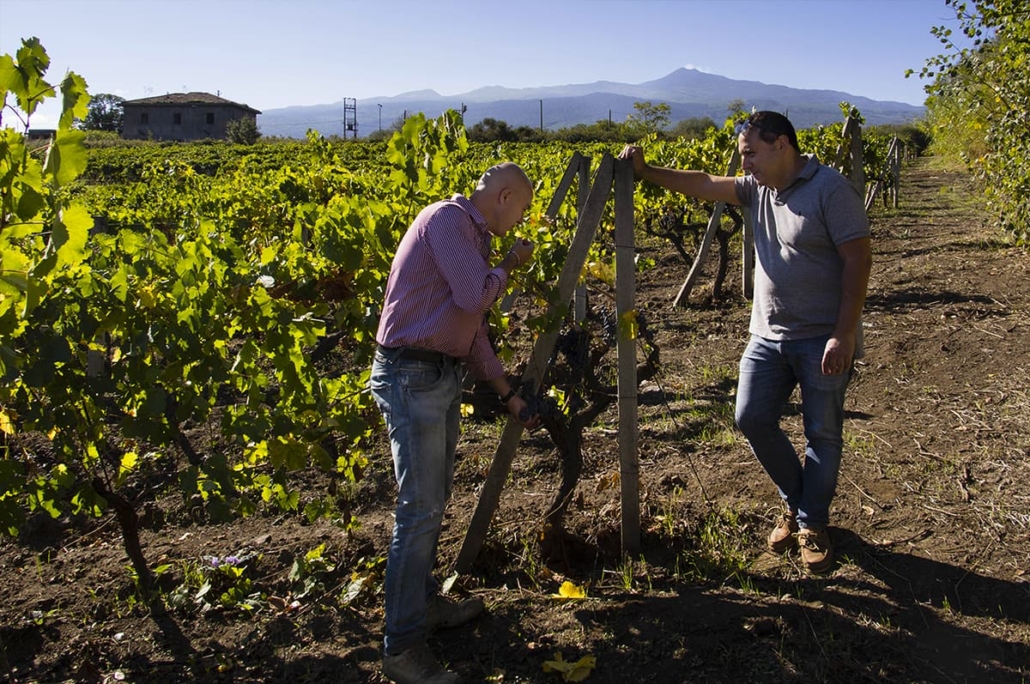
Giuseppe Russo (right) in the vineyard with his winemaking partner, Emiliano Falsini
Since I’m a wine professional, and someone who is infinitely curious about wine, it could be a daunting task for someone looking to gift me a bottle. But it certainly doesn’t have to be. How well do you know your gift recipient, their interests, and maybe even their recent travels?
My friends know I often travel to Italy and frequently teach wine classes on the Mt. Etna growing region in Sicily. I personally would be overjoyed if someone snagged me a higher-end bottle from Mt. Etna, like the 2020 Girolamo Russo Feudo di Mezzo. A little research reveals that 2020 is a wonderfully balanced year, built for cellar aging, but also very giving in its youth if I couldn’t wait to open it.
Giuseppe Russo is a star on Mt. Etna, producing terroir-driven wines with his unique style of fermenting in used barrique. I would be so impressed that my friend took the time to listen to my interests and find me a wine I would truly geek out on.
— Emilia Aiello
Throwback
The Oddero family has been making wine in Barolo for more than 150 years, and by 1900, they were already exporting their wines to the States in small oak barrels. Today, Oddero remains one of the most respected houses in the region. They’ve been tending the slender Rocche di Castiglione hilltop vineyard for roughly 80 years, and the wines from this steep and shallow cliff-side plot accentuate the more graceful, mineral tones of nebbiolo.
That’s why the 2019 Oddero Barolo Rocche di Castiglione ranks high on my list. I was fortunate enough to sample a previous vintage of this bottling (2008, I believe), and found it to be incredibly expressive and complex, elegant but not without ample stuffing. I’m excited to see what this illustrious producer and its superb vineyard came up with in the highly acclaimed “throwback” vintage of 2019.
— Marc Greilsamer
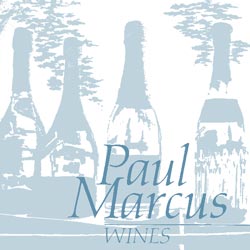
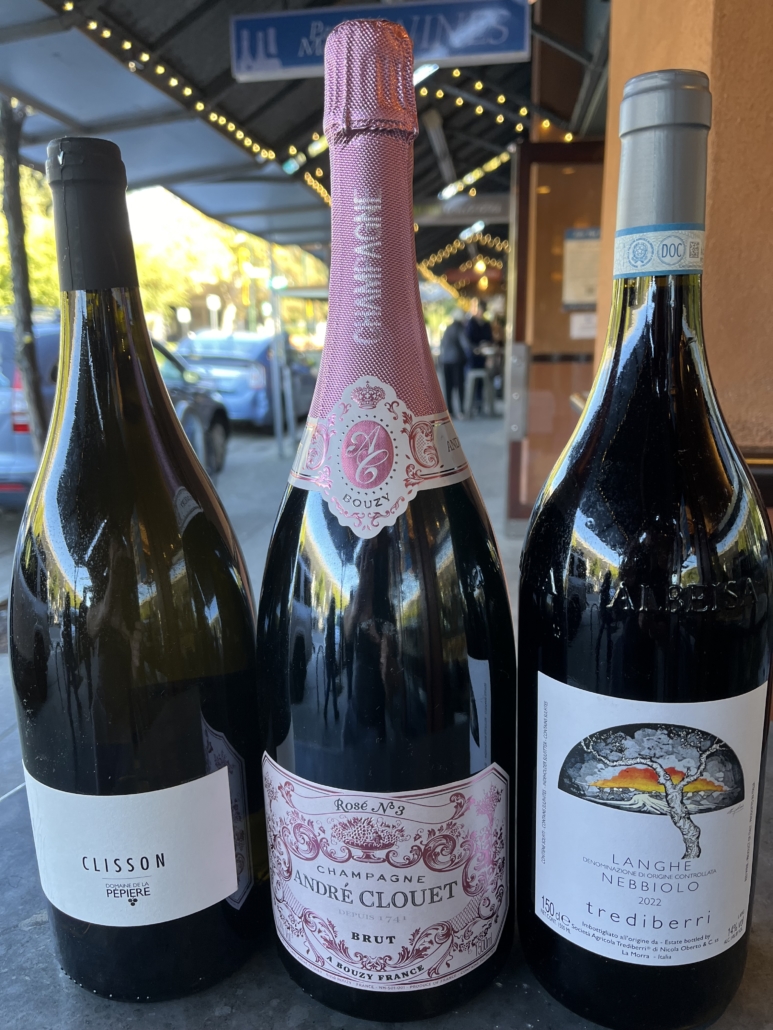 Bright Stripes
Bright Stripes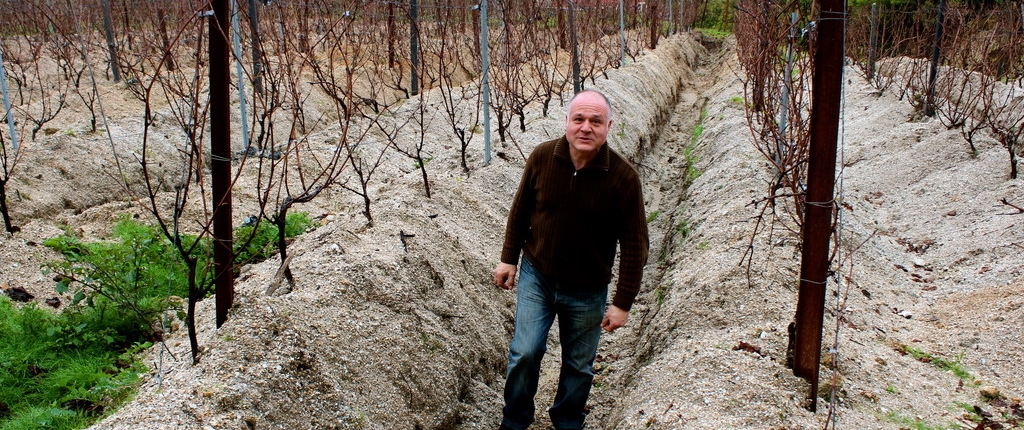
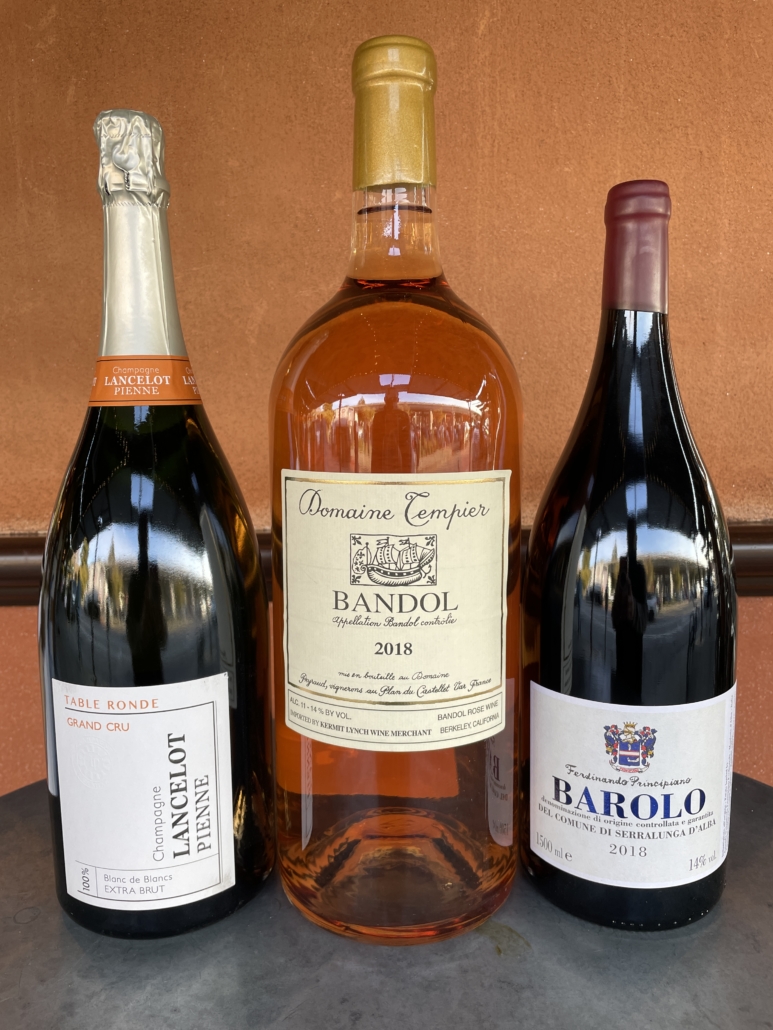
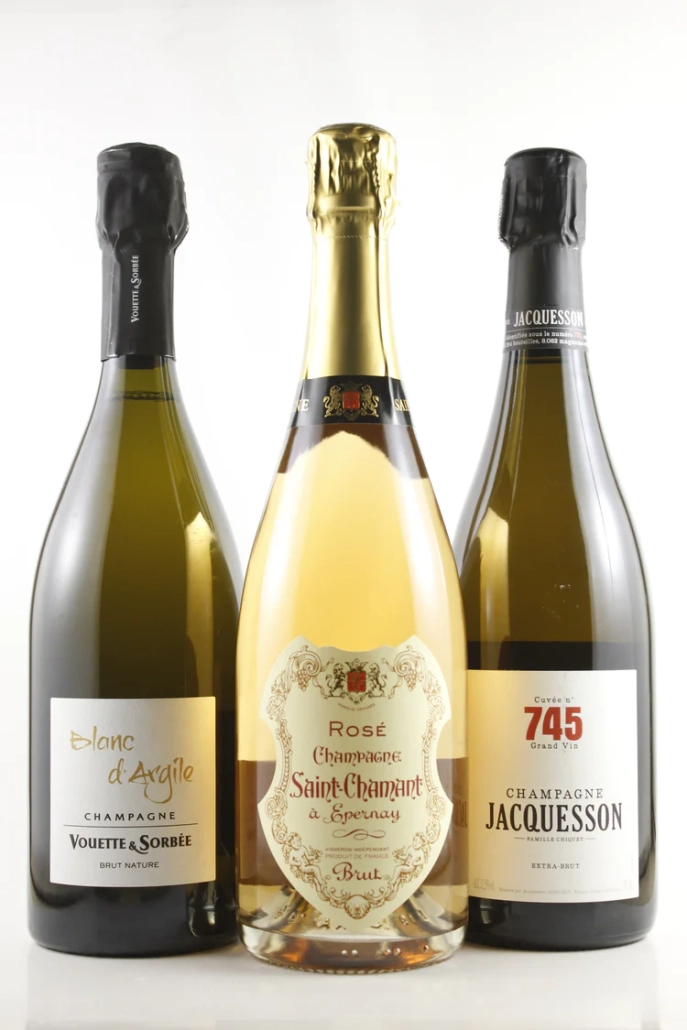
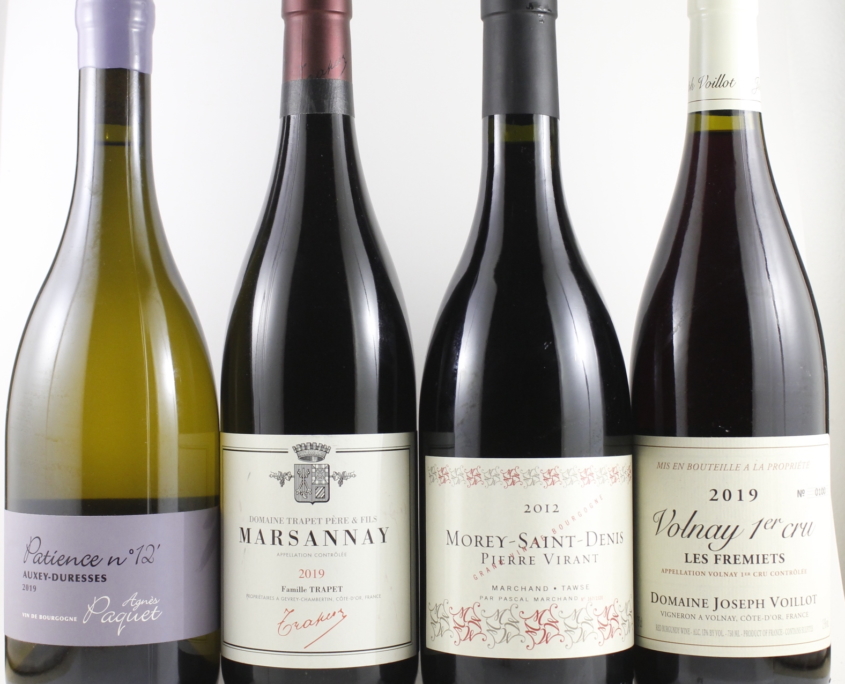 The task at hand was for the staff to share ideas for one “value” and one “splurge” from the celebrated wine region in the heart of France. Of course, some of us couldn’t resist wandering off the beaten path … which just goes to show: There are no rules in the world of wine–only suggestions and propositions. Here are a few ideas to get you pointed in the right direction, but the ultimate destination is up to you.
The task at hand was for the staff to share ideas for one “value” and one “splurge” from the celebrated wine region in the heart of France. Of course, some of us couldn’t resist wandering off the beaten path … which just goes to show: There are no rules in the world of wine–only suggestions and propositions. Here are a few ideas to get you pointed in the right direction, but the ultimate destination is up to you.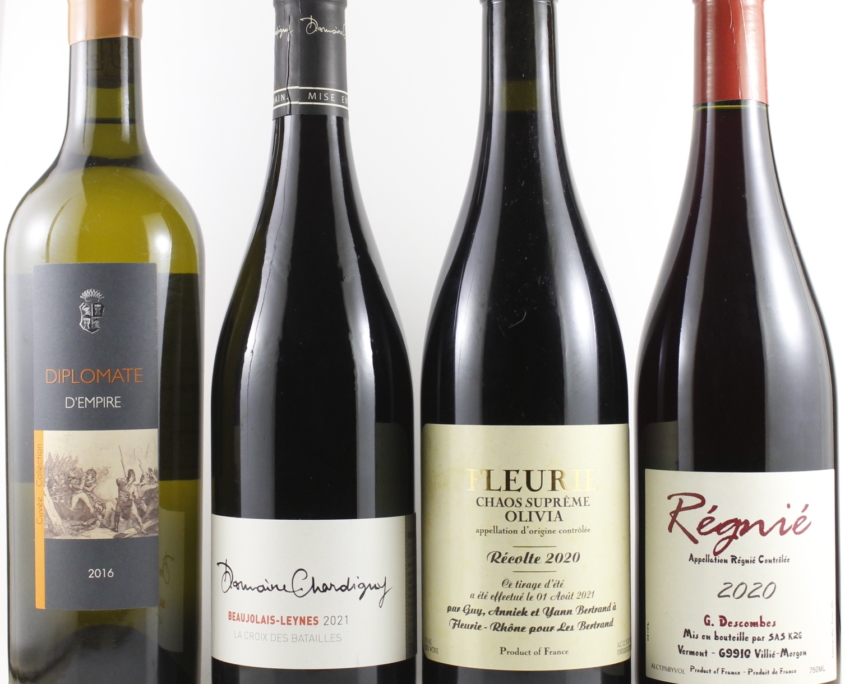 Souls Reaching Their Goal
Souls Reaching Their Goal